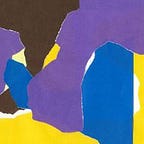For example, if a decentralized organization such as the DAO adopts pain tokens, we can consider the following changes in the automated organizational structure without the intervention of human will (politics).
N: A completely flat and decentralized network-like organization, tentatively assumed.
T=N(T): tree-like routing structure (= organization) formed by the environment and learning up to a certain point.
N(T) is a network that represents the same structure as T.
T´=N(T´): Another tree structure newly re-routed by feeding back the results of exercising the pain token.
N(T´) is a network that represents the same structure as T´.
N´: An organization with multiple inherent tree-like support structures as dynamic routing structures that can quickly switch to N(T) and N(T´).
a: The network N becomes a tree T according to the current task and situation. The necessity to make it a tree is because trees are effective in many cases in terms of division of work and speed of execution. However, the problem is that once the tree is in place, rigidity, concession, discretion, and control become a problem.
b: Use blockchain to trace the pain tokens fired as environmental maladaptation signals of T. This signal should use a public blockchain to ensure objectivity from intra-organizational politics. An automatic process that accounts for the pain token tracing will transform the tree T into T´. Then, run an algorithm to reflect the signals of these pain tokens to the organizational structure and routing in a human-free manner.
Since it uses a public blockchain, the trace results are externally referable. The total amount of pain tokens that the organization has produced through its activities will appear like gas emissions. In this way, we will attempt to counteract the opacity of governance in dishonest companies and the like. If the organization does not disclose the tracing results, it will have to face the question from the public as to why it does not.
The members themselves are the ones who operate the pain tokens, and since they are anonymous and the blockchain ensures objectivity, fraud in the information input part is highly preventable. Instead, the problem seems to be the politics of how the pain tokens reflect the organizational structure and the update algorithm. We plan to discuss this separately at some point.
c: Depending on the state of the environment, reconfigure the organizational structure as actions referring to past learning results. In the figure, N(T) and N(T´) appear simultaneously, but there can be many tree structures, and it is sometimes impossible to separate them clearly.
In this situation, heterogeneous tree structures live together in the organization, so relationships such as “boss-staff” reverse depending on the condition. If keeping such a dynamic structure has a higher adaptability and learning ability to the environment than a fixed tree-like organization, such an organization will have a robust competitive advantage. Since pain is subjective, it may be reduced by a free lunch (= consuming no physical resource), so to speak, independent of physical and statistical conservation, and therein lies the hope.
Credits:
Original idea and articles by Asaki NISHIKAWA, Draft written by Toshihiro FURUYA and Moya, Simultaneous editing by VECTION
This article is based on the “Blockchain and Revolution: What are the conditions under which decentralization can be a ‘revolution’?” and “r/place subjects and governance: Blockchain and interfaces that invite revolution.” We have extracted, added, and re-edited the parts describing pain tokens and PS3.
